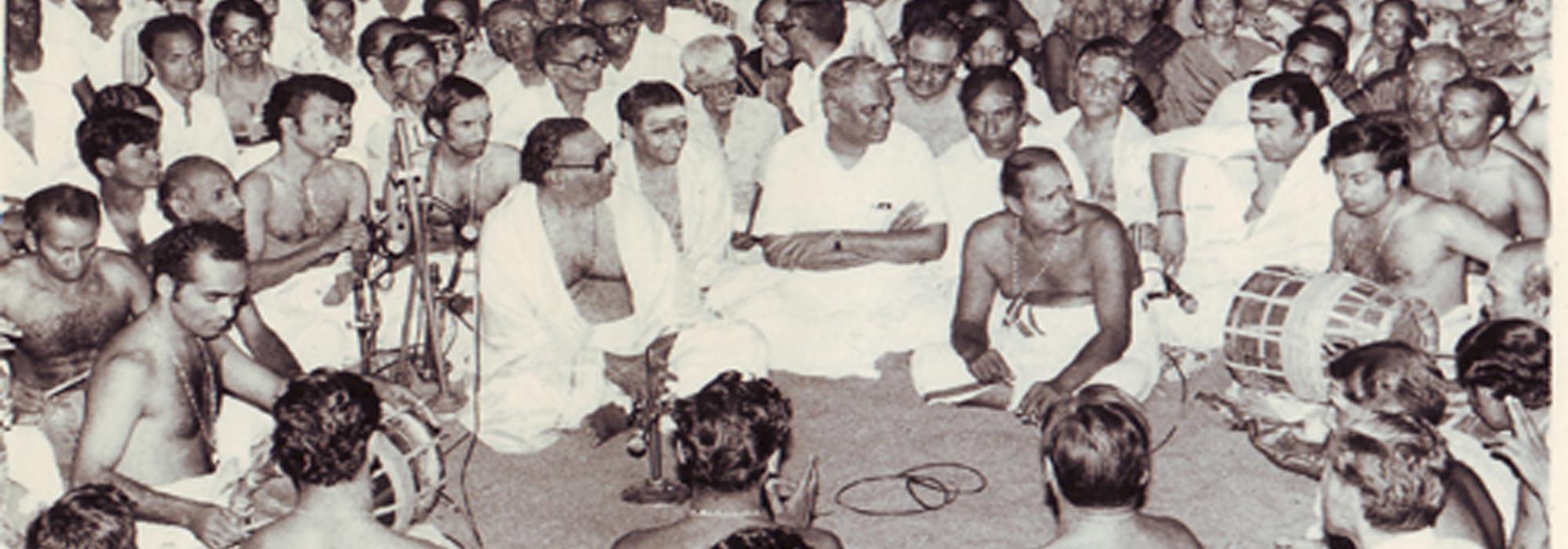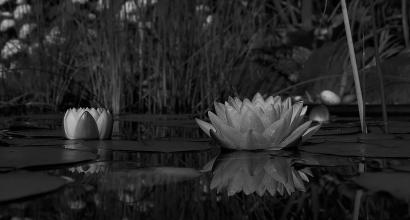Sri Ananta Sastri had distinguished himself as one of the most prominent (Classical) musicians of Bangalore. He possessed an extremely manly voice in both singing and teaching music. I listened to his music for the first time in 1904. He was in his youth back then. That particular concert was attended by quite a large number of Vidwans belonging to the older generation.
Sri Sastri was immaculately attired. A Felt hat on his head. An elaborate wraparound Shalya (to cover the upper body). A fine coat. A Dhoti with an ornate border. It was a wedding concert. Sri Sastri opened it with the very popular composition, Vatapi Ganapatim. The Alapanam of the Raga, the rendition of the composition, the Kalpanaswara–all of these were intricately woven. Now it appears that it was one of the concerts that he performed in the initial days of his career. Most folks in the audience showered generous praises and discussed among themselves that a new star had risen in the world of music.
Sri Ananta Sastri was a Muluknadu Brahmin born in Bangalore. The home of his ancestors was located somewhere near the Narasimhaswamy Temple in Balepet. His elder border, Annadana Sastri was also a Vidwan of music and served as a teacher in some school.
Sri Ananta Sastri’s Guru was Salem Narasayya who adorned the galaxy of Mahavidwans of that era. Sri Ananta Sastri had also taken tutelage under “Pallavi” Seshayya.
On occasion, I took a train from Bowringpet to Bangalore, a journey of about three hours. My compartment consisted of just one other person apart from me. I didn’t know the person. Throughout the journey, he kept drumming his fingers as though he was striking a Tala (rhythmic beat typically set to music). I found it fascinating. His beats were in perfect rhythm with the Kat-Kat Kat Kat Kat noise of the train.
He alighted from the train at the Cantonment Station. About five or six people were waiting there to welcome him complete with flower garlands and lemons. When he alighted, they touched his feet and paid him their respects. I was acquainted with one of the people there. When I enquired, he said, “Don’t you know him? He’s Pallavi Seshayya.” I had indeed heard his name but never got the opportunity to savour his music.
Swarasimha Kutty
Sri Ananta Sastri’s path was of the same, aforementioned nature. He would typically choose Kritis (musical compositions) that rendered themselves malleable for creative elaboration by adding Kalpana Swaras. The following was among his favourite Kritis.
eduTa nilicitE
nIdi sommulEmi bOvurA ||
tarAna dorakani
parAku nAyeDa
nu rAma jEsitE
surAsurulu me-|
tturA ipuDu I
harAmi tanamE-
lara bhakta tyAga
rAjanuta nA ||
He dearly loved the bombastic rhyme pattern in this Kriti, the beat variations, and the majesty of the Sankarabharanam Raga. Indeed, if the force of his palm that landed on his thigh as he rained down each beat of the Tala, would fall on the thighs of this generation’s youth, their skin would peel away. The pure joy that he experience while singing was evident from the enthusiasm and raidance that emanated from his face.
Yet another Kriti that he sang with great gusto was Kshirasagara Shayana set to the Devagandhari Raga.
And so, owing to such demonstrated Vidwat (scholarship, musical prowess), he earned the sobriquet, Swarasimha Kutty [Literally: The Lion of Swaras. The word Kutty in Tamil means small or tiny boy]. A rumour said that the Sringeri Jagadguru had bestowed this title upon him. Another rumour said that it was conferred by Tamil Vidwans.
After his wife’s death, Sri Ananta Sastri took up a room above the Udupi Hotel in Chickpet. A few years later, he started a music school in a room on the first floor of the Uttaradi Matha building. In this connection, he once visited the home of his former Guru, Sri K A Krishnaswami Iyer in Basavanagudi. I was present there that evening along with two or three others. Sri Krishnaswami Iyer said in Telugu, “Oye Anantu, how long has it been since I listened to your music? When do I finally get to listen?”
Ananta Sastri said, “Whenever you wish. I’m your disciple. I’m awaiting your command.”
Krishnaswami Iyer: “How about today?”
Ananta Sastri: “Right now.”
Sri Krishnaswami Iyer’s wife, Smt Subbamma who had been following this conversation from the inner quarters of the house presently arrived and said, “All arrangements for meals have been made. It would be great if you all sat down after food.”
Accordingly, the six or seven of us had our meals and reassembled in the hall.
A Feast of Music
Sri Krishnaswami Iyer was a lecturer of English Literature in Central College. He later served as the Headmaster in various High Schools. He loved music passionately and was proficient in playing the violin. That evening, he took out his violin. It must’ve been about eight-thirty in the evening. Sri Ananta Sastri asked, “What Raga should I sing?” Sri Krishnaswami Iyer suggested Kedaragowla. And thus it began. First, an Alapanam followed by a Kriti in that Raga, and then using the Kriti as a pretext, a vigorous play of Kalpanaswara. It was eleven-thirty when the whole thing was over. Sri Krishnaswami Iyer said, “What we listened to today is real music. You have served us all a grand feast.”
Love for Humour
Sri Ananta Sastri was endowed with a humourous nature. But because he was also short-tempered and spoke bristlingly, his humour would take on greater colour. He sported a majestic moustache. We used to joke around that it would take a pot each to wash each of his moustaches.
It was four or five in the evening when I visited his music school one day. A very famous violin Vidwan was present there. Soon, a dispute broke out between him and Ananta Sastri over the mathematical calculation of some Tala. As the argument was in progress, another friend walked in. He was Sri Ananta Sastri’s disciple. He taught Physics at Central College and was deeply learned in Mathematics. Let’s call him Mr. Rao.
As soon as Mr. Rao crossed the threshold, Sri Sastri asked him, “If you divide 18½ by 7½, how much does one get for an Avartam [a full cycle of a Tala]?” Mr. Rao gave the answer instantly. Sri Ananta Sastri said, “Please remain standing as you are, and spread your legs slightly.” He then turned to the violin Vidwan saying, “You get up now! And crawl between his legs three times. Maybe then at least, you’ll grow some brains.”
This is a sample of Sri Ananta Sastri’s brand of humour.
Nature of Friendship
By nature, Sri Ananta Sastri was kindhearted and friendly.
A wedding took place at the home of the renowned Sri Dakshinamurthi Sastri. The day after the wedding ceremonies, Sri Ananta Sastri visited him at about three or four in the afternoon and asked, “Whose concert is scheduled for the evening?”
D: “I still haven’t thought about it, my man. I don’t have the ability to pay honorarium to the artists. Nor do I like to get work done for free. That’s the reason I’ve remained quiet.”
Sri Ananta Sastri immediately got up, and clasping Sri Dakshinamurti’s feet, said, “You must not utter such words as long as I’m alive. It’s a Seva that I offer to you and not free labour. Leave this concert to me,” he argued. Then he informed his violin and mridangam vidwan-friends, made all necessary arrangements and delivered a grand concert in that wedding.
This is the thirteenth chapter of D.V. Gundappa’s “Jnapaka Chitrashale” entitled “Ananta Sastrigalu” appearing in the volume entitled “Kalopasakaru.”








































Comments